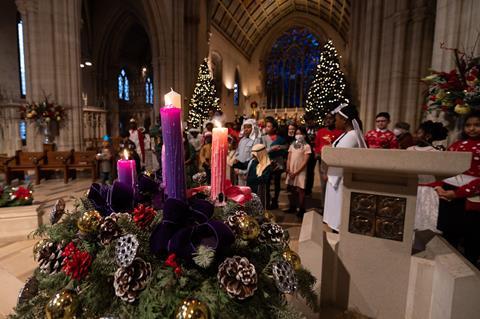Christmas is the time of year when people who never usually attend a Sunday service suddenly stream through the doors. But how can we ensure that at least some of them come back again? Derek Hughes offers his top tips

Christmas is the biggest outreach opportunity of the year. Or is it? Most churches see a huge increase in people attending Christmas events, but almost none come back the following Sunday.
Does this mean Christmas outreach is a waste of time? Are we doing it wrong, or do we need to rethink our success metrics?
What is the next step after your Christmas events?
I hate to break it to you but, often, visitors’ attendance at Christmas has little to do with a desire for Jesus, and much more to do with tradition and habit. If we are not to waste our Christmas efforts, this has three implications:
1. Start further back
Christmas events are full of Bible readings and carols that clearly proclaim (to Christians) why Jesus came. But it’s misleading to think that this helps explain the Christmas message to non-Christians.
Christmas tradition can inoculate people. They’ve heard the readings and songs so often that they don’t hear the message contained within them. So, include these readings and songs - because it’s what people want - but find alternative ways to share the message of good news. Speak about human needs that everyone can relate to: purpose, love, guilt, belonging or satisfaction. This will gain you fresh ears. But to avoid the inoculation effect kicking in, stay away from too many Christmas-related stories or images that may be over-familiar.
2. Provide a next step
A simple way to upgrade your outreach strategy is to add a clear next step to everything you do. If you have a fantastic toddler group, the next step could be hosting a Messy Church event. If you run a lunch club for older people, the next step could be a hymns sing-along. If you organise a quarterly pub quiz, the next step could be a charity event in your church building.
Don’t get trapped into running isolated events that go nowhere. Think about leading people on a journey. Provide a series of simple steps to get to know your church and explore what faith might offer.
On their own, Christmas events are unlikely to achieve much
Small steps are more accessible than giant leaps of faith. Attending a Christmas event might be the perfect next step for some of your contacts. But what is the next step after your Christmas events?
Here’s some possibilities:
- Come back for a January Sunday teaching series (with an inviting theme)
- Check out a website with some helpful resources
- Invite them to text you their prayer requests
- Join a seeker course such as Alpha or Christianity Explored
Choosing the next step for your Christmas events depends on your wider church outreach strategy.
3. Weave Christmas into a long term strategy
Christmas events are not pointless. They can achieve something. But, on their own, they’re unlikely to achieve very much. At best, they give people a little nudge, challenge their perceptions of church or make them think a little about what they are living for.
But it’s a big ask to move someone from no interest in faith to making a decision for Jesus in one event. Instead, It could be more realistic to aim to:
- Create a positive impression
- Trigger some spiritual interest
- Give a flavour of your church during the service
If this fits with your whole year church outreach strategy, you are onto a winner. Build relationships with people who don’t go to church during the year. Then invite them to church at Christmas to see your band in action, hear your minister speak and meet some church people. (We always show a two-minute promo video of our church).
Then you can follow up with further invites to evangelistic events during the year. Christmas events are part of a process. Be clear how they fit, and you’ll never think they are a waste of time.



































1 Reader's comment